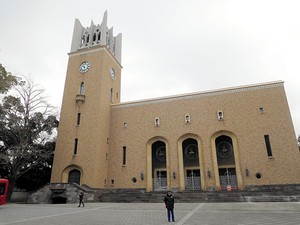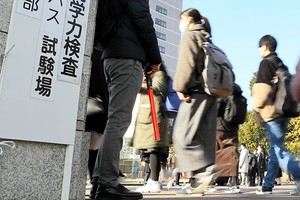By MIKA KUNIYOSHI/ Staff Writer
February 24, 2023 at 07:00 JST
 An aerial view of Naha, the capital of Okinawa Prefecture, in December (Asahi Shimbun file photo)
An aerial view of Naha, the capital of Okinawa Prefecture, in December (Asahi Shimbun file photo)
NAHA--Okinawa Prefecture posted more deaths than births from Oct. 1, 2021, to Sept. 30, 2022, its first annual natural population decline since such counts became available in 1975.
A prefectural estimate showed that 14,672 residents died during the period, 698 more than the 13,974 babies born.
Okinawa had been Japan’s only prefecture with natural population growth.
The decline in the southernmost prefecture was attributed to increased fatalities from COVID-19 and more residents refraining from marrying or having children.
“The dwindling birthrate and aging of the population are gradually progressing in Okinawa, too,” said a prefectural representative. “We will be closely watching the figures to determine if the natural decline is temporary.”
Okinawa Prefecture’s fertility rate, or the average number of children a woman is expected to give birth to in her lifetime, was 1.80 in 2021, the highest among all prefectures.
The national average was 1.30.
But Okinawa reported its first month-on-month natural population decline in February 2021.
And since February 2022, such decreases have continued for 12 straight months.
Okinawa’s population actually increased to 1,468,634 as of Oct. 1, 2022, because 806 more people relocated to the prefecture than those who moved out over the year.
Although the upward trend continued, the year-on-year increase in overall population was a record low 108.




















A peek through the music industry’s curtain at the producers who harnessed social media to help their idols go global.
A series based on diplomatic documents declassified by Japan’s Foreign Ministry
Here is a collection of first-hand accounts by “hibakusha” atomic bomb survivors.
Cooking experts, chefs and others involved in the field of food introduce their special recipes intertwined with their paths in life.
A series about Japanese-Americans and their memories of World War II